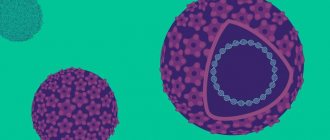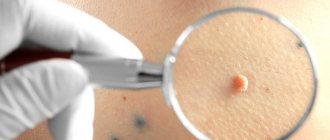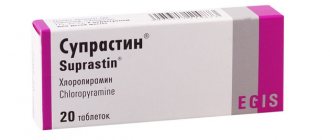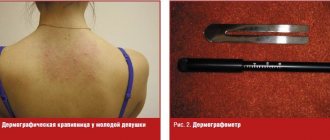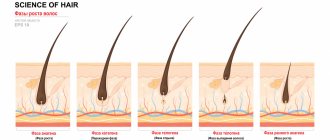Approximately 90% of the adult population in our country is infected with oral herpes. It is caused by herpes simplex virus type 1 (HSV-1). Most people become infected with oral herpes as children, through kissing or close contact with family or friends.
Herpes is popularly called “fever” and “cold sores,” although this is not an entirely correct definition of the disease. Symptoms of oral herpes most often appear on or around the lips and the sides of the nose, but the rashes are not always limited to this area. For some, symptoms may appear between the upper lip, nose or inside the nose, chin or cheeks. In these cases, the pathology is referred to as oral-facial herpes.
The virus is transmitted by direct contact between the infected area and broken skin (cut or crack) or mucous membrane (mouth or genitals). Herpes can also be transmitted in the absence of symptoms. There are several days over the course of a year when the virus reactivates but does not cause symptoms, and a person may be contagious.
Since it is a viral infection, several approaches are used to treat it. First of all, specific antiviral drugs are prescribed. Herpes is one of the few viruses against which fairly effective drugs with direct antiviral action have been found. Treatment is supplemented with immunomodulatory drugs and interferon inducers. They help make the exacerbation less lasting. The most popular tablets for herpes are for adults, along with creams that have antiviral activity. If creams work only in the skin, then tablets help block the activation of the virus inside the body and make it go “resting” again.
Although any drugs help suppress the activity of the virus, tablet forms have a number of advantages:
- they are convenient and easy to use, you can carry them with you everywhere so as not to disrupt your dosage regimen;
- tablets have a systemic effect on the entire body, therefore they quickly suppress the activity of herpes;
- they can be used prophylactically before certain procedures or interventions, and they have immunomodulatory effects to a certain extent.
Rating of the top 10 tablets for herpes according to KP
We discussed with experts the most widely used and best pills for herpes in adults. However, it is important to remember that the information described below is not a guide to action; all treatment measures must first be discussed with a doctor.
Favirox
Favirox. Photo: Specifar Pharmaceuticals
Tablets are available in different dosages and are sold with a doctor's prescription. The main active ingredient, famciclovir, has a pronounced viricidal effect against herpes simplex virus types 1 and 2; it has a worse effect on other forms of herpes, although it is applicable in the treatment of herpes zoster. Indicated for people over 18 years of age, the regimen is selected individually; at the initial stage of infection, it can prevent the appearance of rashes.
The antiviral effect lasts up to 12 hours, so it is taken twice a day. Compatible with other medications. Particularly effective for preventing relapses with frequent rashes.
It has a number of side effects - it provokes headaches with nausea and diarrhea, possible skin rash, abdominal pain. Contraindicated during pregnancy and breastfeeding, in children. Cannot be used for liver and kidney problems.
Valtrex
Valtrex. Photo: GLAXO WELLCOME, SA
Available in tablets, sold by prescription. The main active ingredient is valacyclovir. It has an active effect on various types of herpes viruses. Effective against oral and genital herpes, eye lesions caused by a virus and shingles. The drug is taken in a course twice a day.
Side effects include nausea and headache, and allergies to components. Prohibited during pregnancy and breastfeeding, with kidney damage to the liver, and against the background of HIV infection.
Acyclovir
Acyclovir. Photo: Belmedpreparaty
The drug is available in tablets, including “forte” form, and is available without a doctor’s prescription. The main active ingredient is acyclovir, which has a virusicidal effect against herpes types 1 and 2. For other types of herpes, the effectiveness is less.
Take up to 4 times a day immediately after meals; use caution in older people. While taking Acyclovir, you need to take a lot of fluids.
For kidney problems, the dose is selected individually, usually it is 2 times lower. It should be used with caution in people with neurological pathologies. Use with caution in pregnant and lactating women. Side effects include headaches and dizziness, allergies, shortness of breath, swelling and vision problems. The drug is incompatible with alcohol.
Isoprinosine
Isoprinosine. Photo: Luzomedicamenta-Technical Pharmaceutical Society
Tablets with the active ingredient inosine pranobex are available with a doctor's prescription. They have antiviral activity, stimulate the activation of lymphocytes, increase the synthesis of protective immunoglobulins, which strengthens the body's immune defense. Increases the activity of acyclovir, which makes it possible to use it in the treatment of severe forms of herpes.
You need to take the drug up to 4 times a day; in severe forms, the dose is doubled. The course of treatment lasts up to 10 days. Prophylactic use is possible.
Contraindicated in the presence of urolithiasis and arrhythmia, gout, kidney failure. Side effects - digestive disorders, headache, joint discomfort, exacerbation of gout.
Minaker
Minaker.
Photo: Apotex A drug with antiviral activity, available by prescription, sold in tablets. The main active ingredient is famciclovir. The drug is indicated for any stage of herpes of the first and second types, as well as for herpes zoster. After entering the body, it is converted into penciclovir and acts for up to 12 hours, suppressing the reproduction of viral particles inside the cell and DNA replication.
The drug is effective for herpetic neuralgia, recurrent forms of infection for treatment and prevention.
Prohibited during breastfeeding, pregnancy, and kidney and liver problems. Digestive disorders and headaches may occur while taking it.
Amiksin
Amiksin. Photo: Pharmstandard-Leksredstva
Amiksin is an over-the-counter antiviral drug in tablet form. The drug is suitable for the treatment of herpetic infections, including relapses. Contains tilorone, which acts as an immunostimulant - an inducer of interferon formation.
Do not use during pregnancy, lactation or if there is an allergic reaction to the components of Amiksin. For use by persons over 18 years of age. Allergic reactions are possible, and therefore treatment should be carried out under the supervision of a specialist.
show more
Zovirax
Zovirax. Photo: GLAXO WELLCOME, SA
Another drug containing acyclovir for the treatment of herpes simplex virus. It is most often used in the form of an ointment for topical use; there is also a tablet form.
Can be used during pregnancy under medical supervision. The drug passes into breast milk, so it is prescribed with extreme caution during lactation.
Zovirax is contraindicated for kidney pathologies. In tablet form, it is allowed only for children over 3 years of age.
Normomed
Normomed. Photo: Obninsk Chemical and Pharmaceutical Company
Medicine in the form of syrup and tablets for the treatment of herpes in children and adults. Contains a synthetic purine derivative - Inosine Pranobex. It is a stimulator of the body's defenses and a nonspecific antiviral drug, available from the pharmacy with a prescription.
The effect of the drug on pregnant and lactating women has not been studied, so they should avoid using the drug. Contraindications also include:
- gout;
- urolithiasis disease;
- arrhythmia;
- chronic renal failure;
- children under 3 years of age;
- body weight less than 20 kg.
Arpeflu
Arpeflu. Photo: Lekpharm
Arpeflu tablets are taken for recurrent herpetic infections. The active component is umifenovir hydrochloride with antiviral and immunomodulatory properties.
Do not use in children under three years of age or with galactose intolerance. A prescription is not required for purchase, but it is better to determine the dosage and duration of treatment with your doctor.
show more
Lipster
Lipster. Photo: Farmak
Antiviral drug against herpes virus types 1 and 2. Contains acyclovir triphosphate, which prevents viral DNA synthesis. There are two forms of release: topical cream and oral tablets.
Contraindications include hypersensitivity to the components of the drug. The safety and effectiveness of use in children under 12 years of age have not been sufficiently studied.
The course of treatment is at least 4 days; the exact dosage and treatment plan are selected by the doctor.
Herpes: what is it, reasons for its appearance
How is herpes transmitted
Herpesviruses (Herpesviridae) are a large family of complex viruses that cause various diseases. The routes of transmission of pathogens are contact and airborne droplets. They enter the body through minor damage to the skin or mucous membrane. Parasites travel along nerve pathways to nearby nerve nodes, where they “sleep” until reactivated.
Almost 9 out of 10 carriers , but not everyone has complaints. Primary infection is usually asymptomatic in childhood, between the ages of 1 and 5 years . Sometimes a child becomes infected from the mother during pregnancy or childbirth. Once pathogens enter the body, they remain there for life.
Their reactivation is caused, for example:
- severe stress,
- menstruation (in women),
- weakened immune system due to illness or medication.
Symptoms are not always pronounced. However, the danger of infecting other people exists, since the virus actively multiplies in the body and is released into the environment. To speed up healing, it is important to choose a good medicine for herpes.
Types of pathogens
There are 8 types of herpes viruses, three of which are poorly understood. Another 3 - cytomegalovirus, varicella-zoster, Epstein-Barr virus - cause relatively common diseases. These are herpes zoster, mononucleosis, chickenpox, cytomegaly. The most common herpes simplex viruses (HSV) are types I and II. Primary forms of infections:
- labial, or labial (Herpes simplex labialis),
- genital (Herpes simplex genitalis),
- generalized in patients with immunodeficiency,
- herpetic encephalitis in newborns (Herpes neonatorum).
herpes virus under a microscope
A characteristic symptom of the first two is the formation of painful blisters filled with liquid containing countless parasites. They are transmitted through any skin-to-skin contact, such as kissing. Failure to comply with hygiene rules leads to the spread of pathogens throughout the body. Rashes may appear on the nose (Herpes nasalis), cheeks (Herpes buccalis, Herpes facialis), eyelids and other areas (Herpes cockis).
Tromantadine
Tromantadine is a derivative of amantadine used to treat influenza. The antiviral effect is due to inhibition of the replication of herpes viruses.
Currently, instead of tromantadine, more active drugs from the group of acyclic nucleosides (acyclovir, etc.) are used.
Adverse reactions
Contact dermatitis.
Indications
Infections of the skin and mucous membranes caused by HSV and varicella-zoster
.
Contraindications
Allergic reactions to the drug.
Warnings
There are no data on the safety of tromantadine during pregnancy and breastfeeding.
Safety rules for herpes and preventive measures
To avoid spreading the virus throughout your body and infecting other people, follow these rules:
- Do not touch the affected area of skin with your hands. Apply ointments with a cotton swab.
- Use separate dishes and cutlery.
- Don't give other people your cosmetics.
- In the acute stage of the disease, give up kissing and abstain from sexual intercourse.
- Avoid close contact with small children and pregnant women.
Start treatment as soon as the first symptoms appear. Repeated outbreaks occur less frequently with strong immunity. Improving the body's resistance is facilitated by maintaining a sleep schedule, avoiding emotional and physical stress, and proper nutrition.
Treatment of herpes video
Isoprinosine
Tablet antiviral drug based on the substance pranobex. It has an immunomodulatory effect, stimulates the production of globulins and lymphocytes, and blocks the spread of the herpes pathogen in the body. It enhances the effect of acyclovir and is prescribed for severe or long-term infections. It is also prescribed for the prevention of generalized forms. The general course of taking tablets is about 10 days.
Caution during therapy with Isoprinosine is necessary for liver, kidney failure, diseases of the central nervous system and joints.
Modern treatment of herpes
The action of medications is aimed at blocking the multiplication of viruses after reactivation. Even the best antiherpes drugs are not able to completely destroy the pathogen. Therapy is carried out to reduce skin irritation, prevent the formation of new blisters and the development of bacterial superinfection.
Several types of virostatic medications are available for internal or external use. Severe itching and burning are reduced by antihistamines, such as Fenistil or Erius. Sometimes doctors resort to antibiotics.
ANTIHERPETIC CHEMICAL DRUGS
The main antiherpetic drugs with effectiveness proven in randomized clinical trials include four structurally similar drugs from the group of nucleoside analogues - acyclovir, valacyclovir,
penciclovir
and
famciclovir.
Moreover, valacyclovir and famciclovir are initially inactive compounds that are converted in the human body to acyclovir and penciclovir, respectively. All of these drugs block DNA synthesis in reproducing herpes viruses, but do not affect viruses that are in a latent state.
With resistance to HSV and varicella-zoster
foscarnet is used intravenously.
idoxuridine are used for topical use.
,
foscarnet
and
tromantadine.
In Russia, the domestic drug Poludan, which has interferonogenic and immunomodulatory properties, is used for ophthalmoherpes, but no randomized clinical trials of this drug have been conducted.


